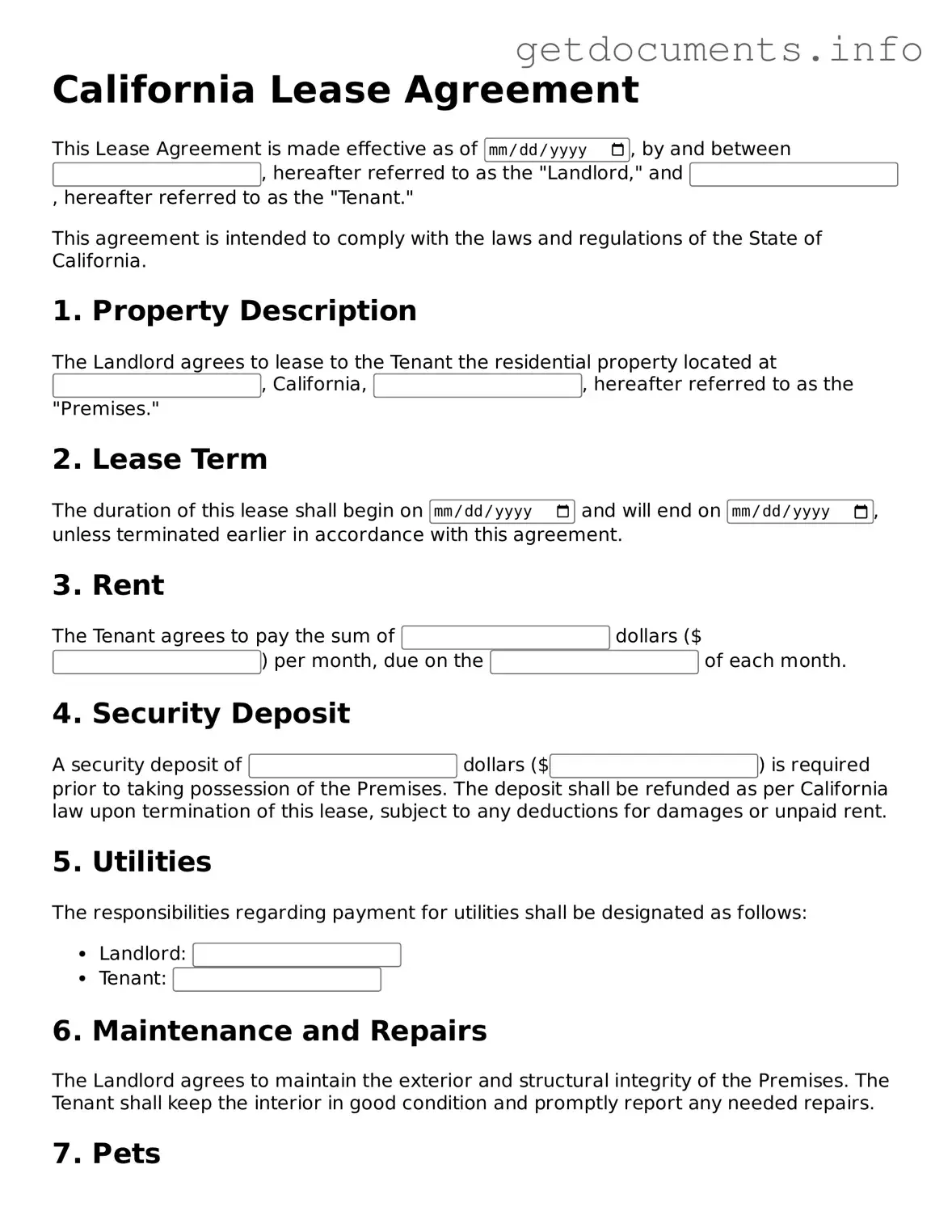Free Lease Agreement Template for California
The California Lease Agreement form is a legal document that outlines the terms and conditions between a landlord and a tenant for the rental of residential property. This form serves to protect the rights of both parties and ensures clarity regarding rent, duration, and responsibilities. Understanding its components is essential for anyone involved in a rental agreement in California.
To fill out the form, please click the button below.
Access Lease Agreement Editor
